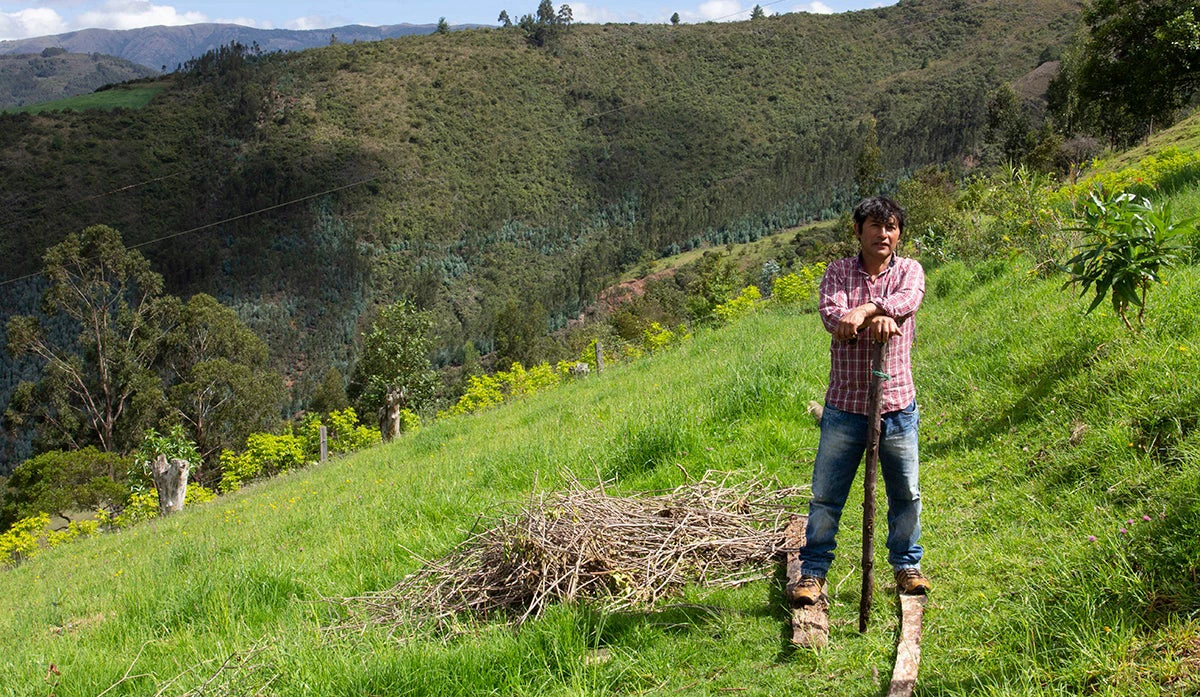 Planting trees and forage bushes on ranches in Colombia is raising farmer incomes while stabilizing soil, retaining water and increasing biodiversity. © Flore de Preneuf/World Bank
Planting trees and forage bushes on ranches in Colombia is raising farmer incomes while stabilizing soil, retaining water and increasing biodiversity. © Flore de Preneuf/World Bank
Not a week goes by without reports reminding us of the negative impacts of food systems on the environment. Agriculture and land use change are leading contributors to deforestation, biodiversity loss and climate change. With 1 million out of 8 million species threatened with extinction, and agriculture the dominant land use, it’s crucial to rethink farming as a source of both marketable goods and environmental planetary functions.
Whether we are primarily food consumers or food producers, taxpayers or policymakers, we all have a stake in greening agriculture for the ecological stability of the planet. But when it comes to implementing change, a lot is currently expected of one group in this system: the farmers.
In reality, farmers are already hard pressed to make a living in a world where market prices are volatile, weather patterns are changing faster than the ability to adapt, and pests and disease may wipe out a season’s production.
How can farmers adopt more sustainable farming practices that not only protect but also restore natural resources? What is the right mix of policy incentives, market signals, regulations, and public investment to support this urgent transition?
The answers of course vary from landscape to landscape. But they must begin with the farmers’ bottom-line. As a Dutch farmer reminded me recently: “If you are in the red, you cannot go green.” In other words: long-term sustainable practices that benefit the planet need to be profitable from a farming business perspective before a farmer can commit to them.
Fortunately, a wide range of practices can produce triple wins by providing adaptation, mitigation and productivity benefits. Climate-smart agriculture includes practices such as improved water management, crop tolerance to stress, intercropping, soil amendments, improved animal waste management, and agroforestry, that allow farmers to reduce their exposure to floods and droughts, store more carbon on their farms, reduce greenhouse gas emissions, and increase their profits.
If farmers have the right incentives and access to affordable capital, the right technologies and relevant advice, they often do step up to the sustainability challenge because it is profitable to do so.
That doesn’t mean consumers and wholesale buyers are off the hook.
Consumers can play their part by purchasing high quality products that reward sustainable and inclusive practices. Responsible sourcing by big companies and market transparency can also help. But price premiums for sustainably-grown crops or animals are often not enough to keep farmers afloat when a commodity faces a production glut or is hit by foreign exchange shocks leading to large commodity price declines. (Witness the pains of a premium Guatemalan coffee farmer profiled by the Washington Post this summer, for example.) And premium products are out of reach for many consumers who struggle to feed and clothe their families.
There is growing consensus that public support to food producers should be reexamined in the light of sustainable development goals, to reduce subsidies with perverse impacts, increase investment in research and development, and create positive incentives for farmers to embrace sustainability. This was a key conclusion of the Food and Land Use Coalition report released in September – Growing Better: Ten Critical Transitions to Transform Food and Land Use – and a policy agenda that is gaining traction in different countries where the World Bank works.
I would argue that we need to go further still. Given the societal demands that are put on farmers’ shoulders, it’s time we redefine what it means to be a farmer in the 21st century: a farmer is not only a producer of food but also a provider of ecosystem services. We need to put in place a system to back that vision up.
Payments for environmental services could help smooth the ups and downs of farm income caused by agricultural commodity price volatility and offer the long-term horizon farmers need to invest in sustainable practices. Sustainable farmers – farmers who go out of their way to enrich the soil, protect riverbanks, plant trees and maintain natural habitats -- could be compensated not only for the seasonal goods they grow and sell on the market but also for the year-round, public environmental services their farmland provides. These payments have been tried with some success in countries like Costa Rica.
However, at their current market prices, payments for ecosystem services, such as storing carbon, stabilizing soil or improving water quality, do not fully reflect the societal value of these services. This gap could be narrowed or closed by repurposing public support to agriculture. Public support could more explicitly compensate farmers for providing these services and in exchange, farmers would need to meet associated compliance standards. Doing so would empower the world’s 570 million farms and their many farmers and workers to transform and restore agricultural landscapes.
It’s clear that food systems need a major overhaul to deliver more sustainable outcomes. Let’s roll up our sleeves and devise policy solutions that make it easier for farmers to play a leading role in restoring the planet.


Join the Conversation